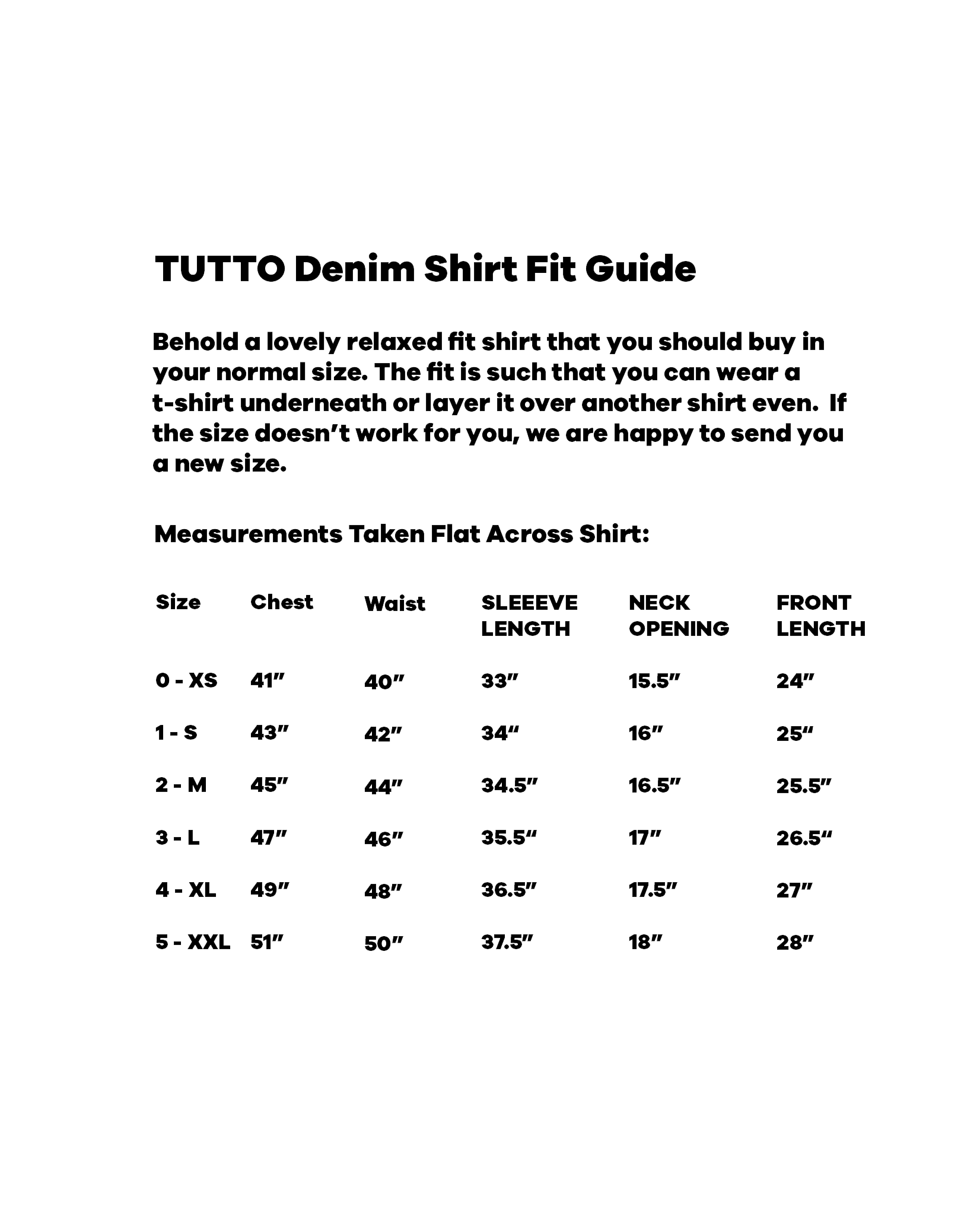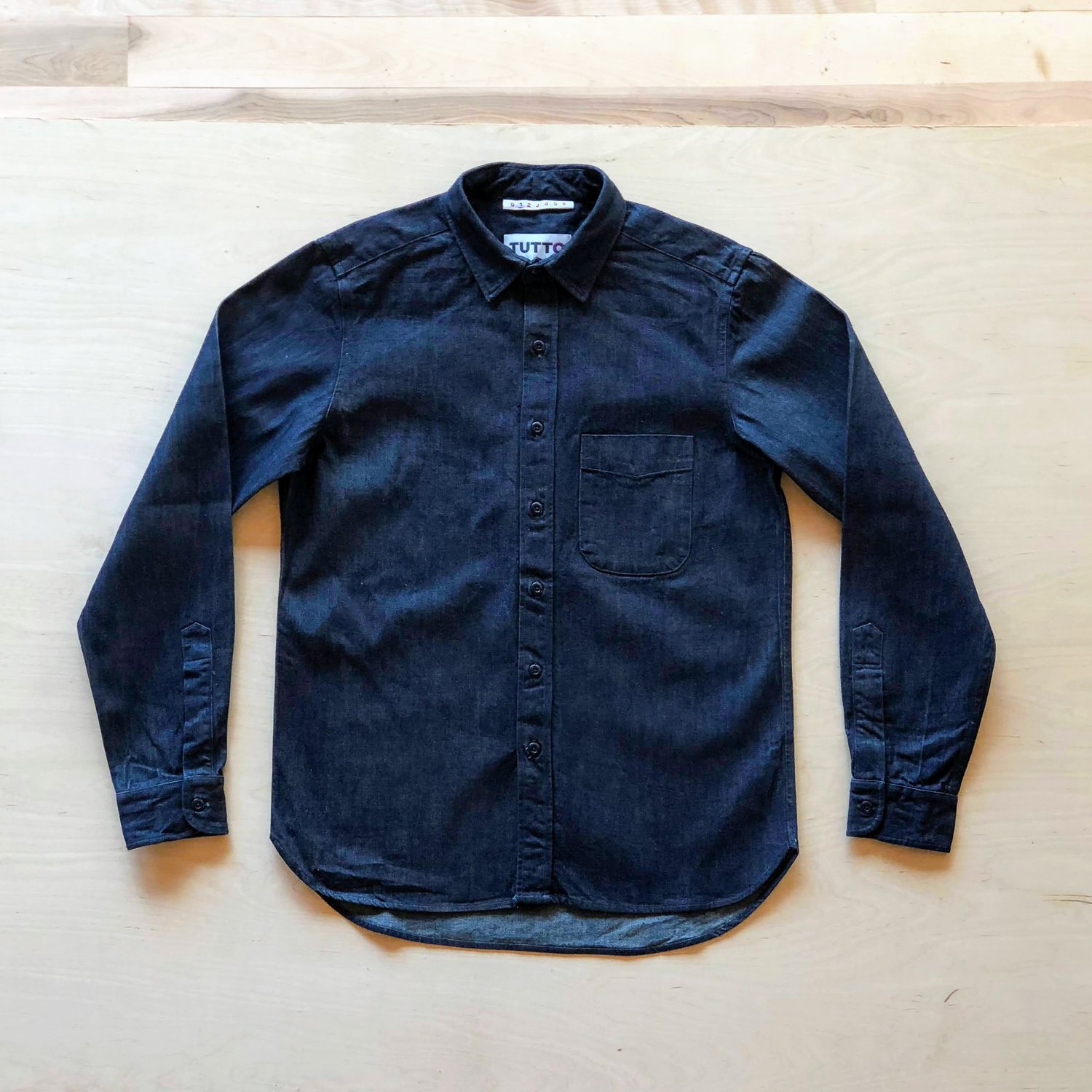






TUTTO Denim Shirt
Some notes on this shirt from Barrett:
A few years ago, I became the beneficiary of a magnificent fabric windfall when I purchased much of the remaining inventory of Cone Mills. This historic denim mill was closing forever.
Pondering what to do with it all, I started taking note of classic denim shirts from the 1980s. They resided everywhere: on the backs of old NE coastal Yankees, in skate parks, on vintage racks—everywhere, really. I’ve spent the last few years trying many vintage denim shirts on and carefully studying the examples I can not get my hands on. During that time, I came to appreciate the versatility and simplicity of this style of shirt.
You see a fit/design I’ve been wearing and washing frequently for a year. There is a fit shot and detail shot showing how the shirt has faded. The denim itself has a great story behind it and I encourage you to read on below....
TUTTO Denim Shirt
Some notes on this shirt from Barrett:
A few years ago, I became the beneficiary of a magnificent fabric windfall when I purchased much of the remaining inventory of Cone Mills. This historic denim mill was closing forever.
Pondering what to do with it all, I started taking note of classic denim shirts from the 1980s. They resided everywhere: on the backs of old NE coastal Yankees, in skate parks, on vintage racks—everywhere, really. I’ve spent the last few years trying many vintage denim shirts on and carefully studying the examples I can not get my hands on. During that time, I came to appreciate the versatility and simplicity of this style of shirt.
You see a fit/design I’ve been wearing and washing frequently for a year. There is a fit shot and detail shot showing how the shirt has faded. The denim itself has a great story behind it and I encourage you to read on below....
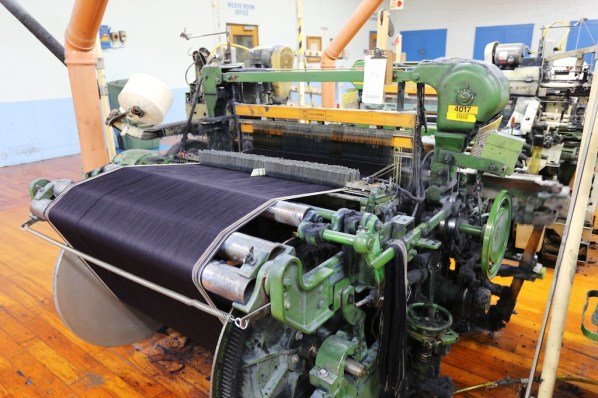
Cone Mills
The crown jewel of the Cone Mills denim plant was a handful of still-operating Draper denim looms from the 1940s. These hulking cast-steel machines produced most of Levi's denim in the 20th century.
While modern denim looms quietly speed along like the Shinkansen, the Draper looms are industrial relics of heavy cast steel. They clank along like locomotives, slowly weaving enough denim to make a pair of blue jeans in two hours.
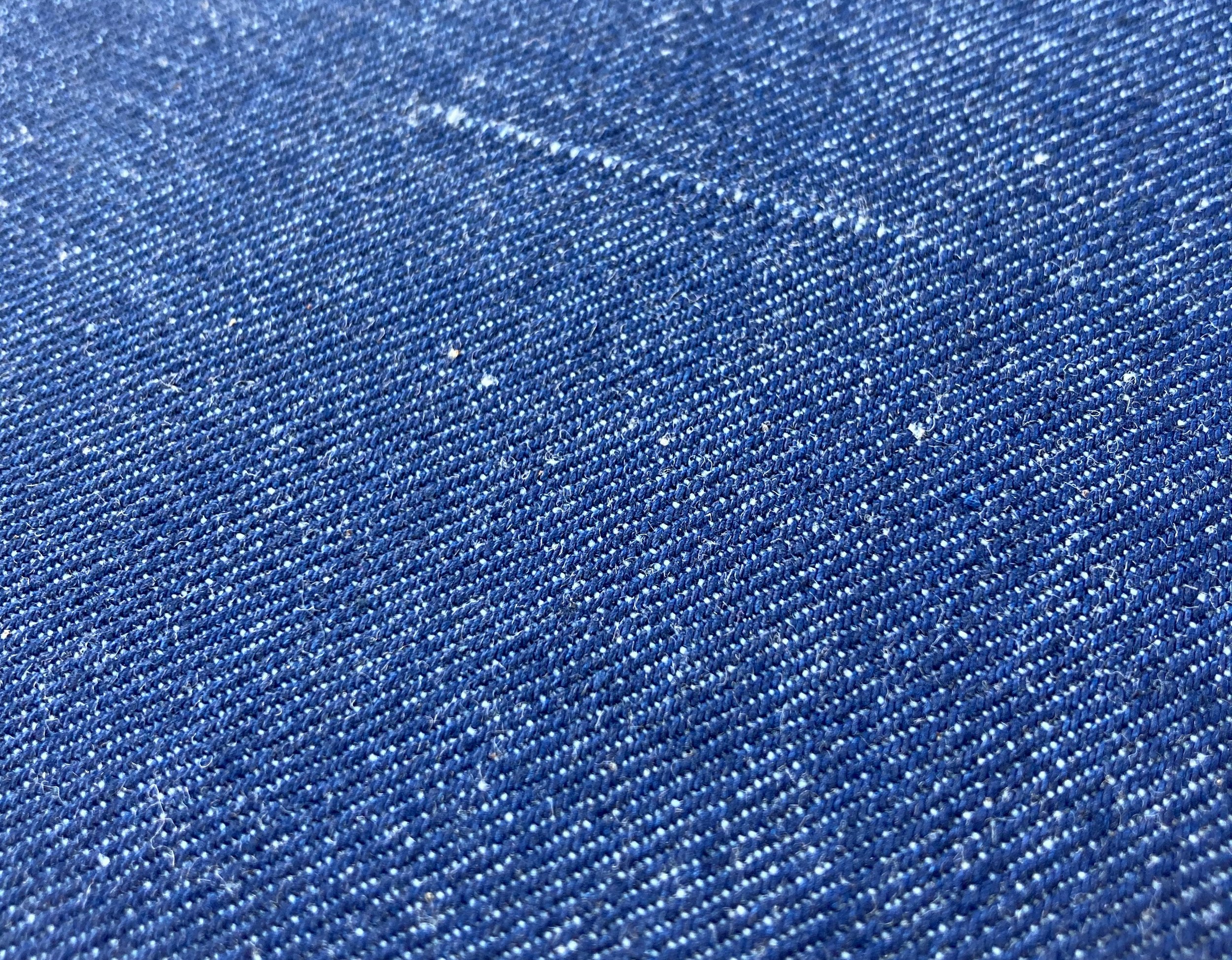
Hundreds of Draper looms chattered in production in the mill's heyday, and the white oak floorboards underneath the machines buzzed like a beehive. The constant vibration created by this industrial symphony created tiny irregularities in the weave of the denim, giving the fabric its signature texture.
Just as a bottle of wine records the climate and soil of a small plot of land and a song records the acoustics of a space, the tuning of instruments and the pitch of artist’s vocals, this denim contains a record of the industrial activity at a historic American denim mill that no longer exists.
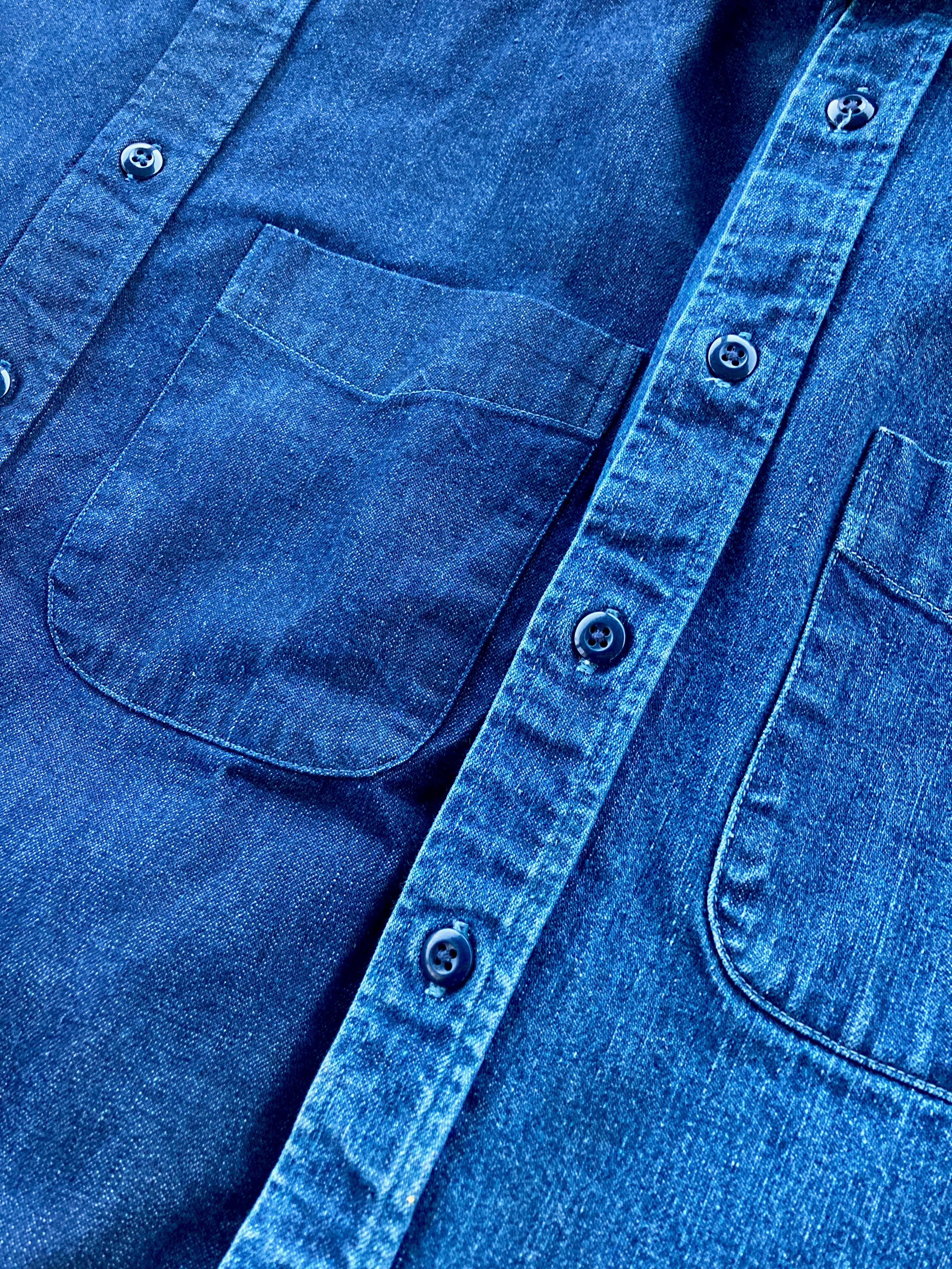
The Shirt
When the Mill was closing, I bought everything I could. Many frenzied buyers passed over the ten-ounce denim—a bit too light for pants and too heavy for shirts. When you first pick this shirt up, you might think it a bit weighty, too.
Fear not, and wash frequently! Water and wear are all that is needed to transform this starchy, dark armor into a soft blanket of blue hues. After wearing this shirt for a year and washing and tumble-drying it pretty frequently, you can start to see the transformation play out: the edges of the pocket, placket and hem will begin to show abrasion, the beautiful irregularities in the weave will become more pronounced and the denim will fade from inky indigo to twilight blue. Somewhere during the transition, you might appreciate that this is the perfect weight of denim for this type of shirt. Relaxed and worn in, the denim is incredibly soft but never gives up the feeling of being substantial. This duality of comfort and utility is why a denim shirt is as beloved and relevant today as it was a hundred years ago.
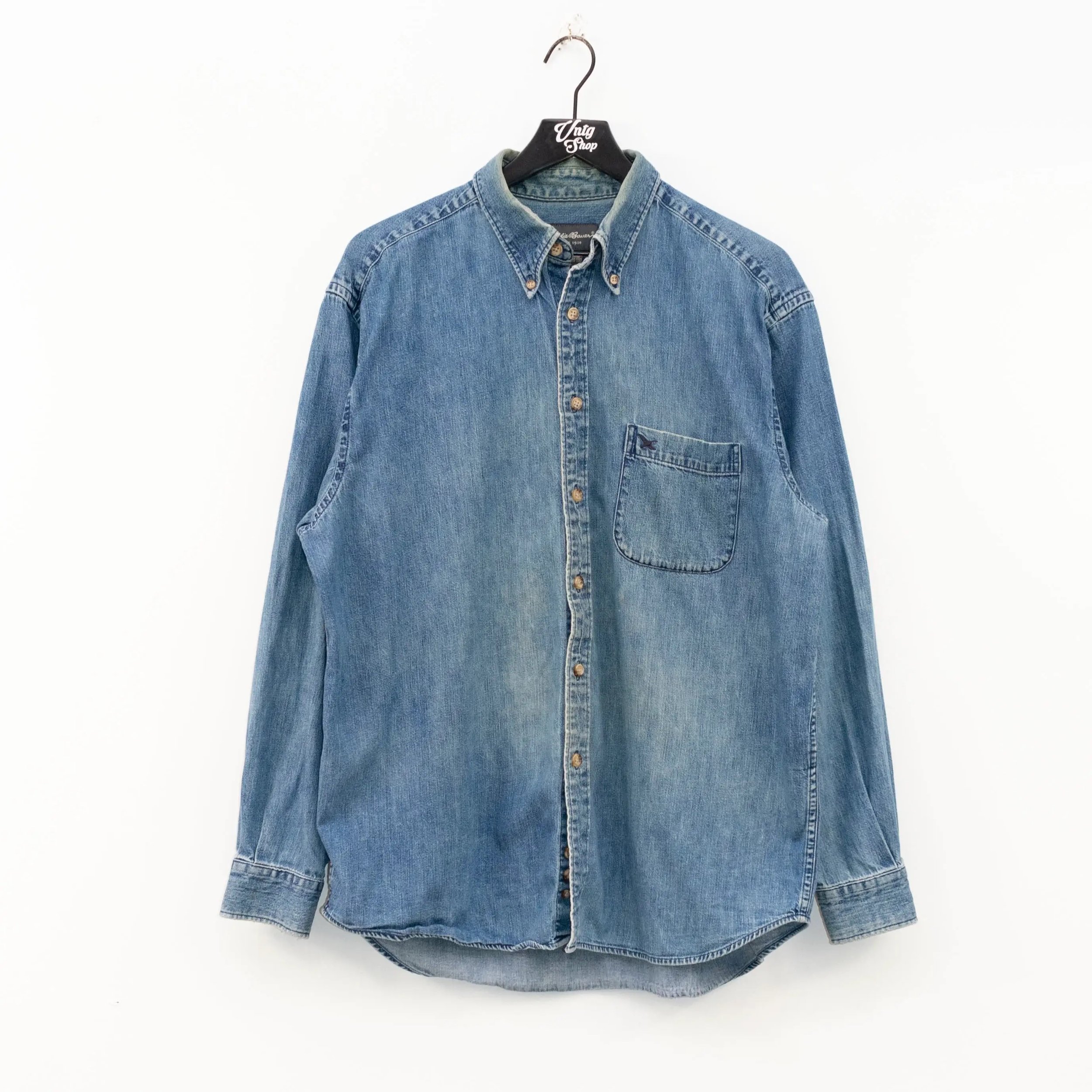
To let the fabric do the talking, I took inspiration from the classic denim shirts of the '70s and ‘80s produced by Gap, LL Bean, Filson, Levis, and Eddie Bauer. I enjoy the easygoing cut of these shirts, but I find the sleeves and shoulders a little baggy, and the sides of the shirt need a bit of taper. I worked with Pam Davis, a friend and longtime pattern maker in San Francisco, who helped the Gap with their first denim patterns. We made the sample in January 2021, and I've been wearing the shirt regularly since. I’m thrilled with the fit and balance of the proportions - and I feel confident in offering it up to friends.

Thank You
Everything comes full circle. A hundred years ago The Miller Company in Denver released the first factory produced version of the denim shirt. Before that, the style was sewn by tailors and haberdashers for ranchers and cattlemen out West. Similar to the earliest denim shirts, this denim was produced on Draper looms and sewn in the city of San Francisco on single needle sewing machines.
Working with a small team of sewers and perfecting the fit through sampling has taken a lot of time. After having moved on from Taylor Stitch six years ago, I’m thankful that so many of the people I worked with have welcomed me back into their factories and studios and helped me make this project happen. This is obviously some really nerdy denim stuff, but I think the simplicity of the design and the history of the textile make this a really cool piece to own. I encourage everyone to wash it, work in it, beat it up and enjoy the way the denim evolves over time. Much Love to you all.
A special thanks to Pam Davis for the pattern work, Mandy and Patrick at Kamei Sewing for working with extra burly denim, Omid and Steve at Pacific Blue Denims for helping me secure and store a small mountain of denim, Jason at Titan trading for helping to secure the highest quality buttons available and American and Efird for still continuing to spin heavyweight indigo thread here in the US.
Much Love to You all.
I think this is fascinating to read for those who are interested ( I obviously am) so here’s more on the Mill:
A Continuous Lean Article on the Mill in 2015 way before it closed.
A Heddels Article on the closing of the mill
